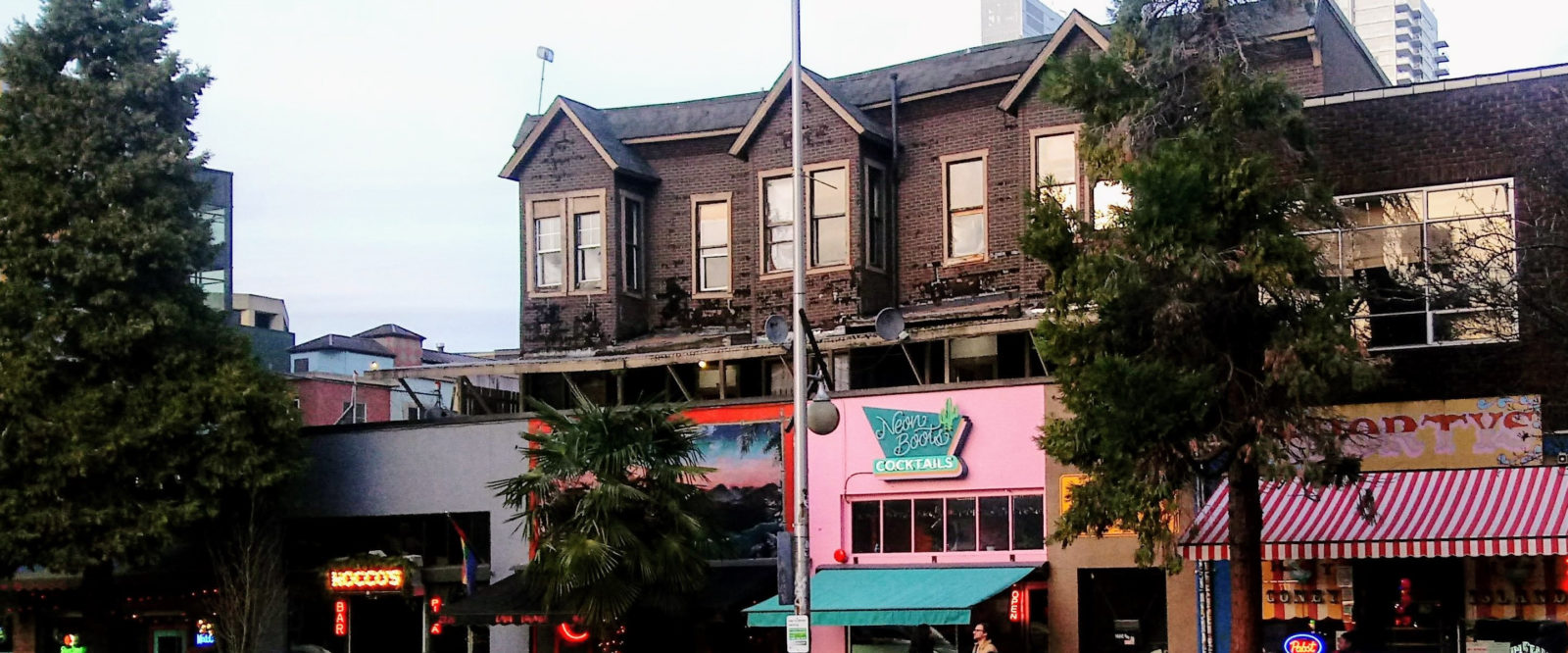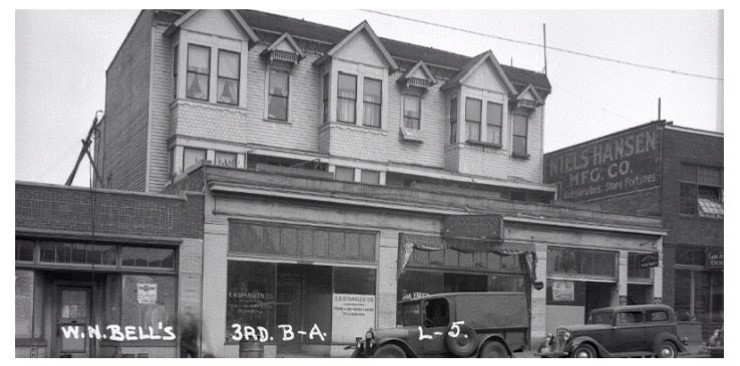“In the Trenches:” Historical Societies Respond to Development

As rapid development continues to affect every corner of King County, most public discussions focus on our future: where will newcomers live? Who will be able to afford to stay here? But as we plan for our future, we also need to consider how development affects our past. The historic buildings, spaces, and artifacts that have shaped our region are at risk of getting swept up and lost. We checked in with some of the experts—our friends at Seattle’s many neighborhood-based historical societies—for an on-the-ground look at how they’re responding to all this change.
At Friends of Historic Belltown, Beck Keller says they are, “…taking the fight to the streets—and the halls of government—to ensure that Belltown’s community spaces remain vibrant, intact, and significant. We do our work in the ‘trenches’: we write comment letters, attend public meetings, and meet with developers to try and forge deals for Belltown’s benefit.” Keller notes that strong partnerships are also key: “We’ve teamed up with two local historic preservation societies, Historic Seattle and Vanishing Seattle, to advance the landmark designation of local community hubs, including the Showbox. When our input was requested for a local park’s design, we emphasized the importance of reflecting the strong Native history that Seattle has, and the importance of the specific location to Seattle’s Native legacy.”

Steve Hall, also a member of Friends of Historic Belltown, pointed out that the landmarks process is not always a straight path to preservation: “FHB and others in the community managed to get both the Wayne Apartments and Mamma’s Mexican Kitchen designated as historic landmarks. However, the City ended up agreeing with the owner of the Wayne that there was no economic use of the property if the building were protected, so they waved any protections.” Persistent advocacy is still critical, Hall says: “FHB has also been working with developers to try and make new buildings fit in with the Belltown look-and-feel and to provide workforce housing, but developers have not been very responsive to such requests. FHB is soldiering on, hoping for help from the City to help preserve and enhance Belltown’s unique character and rich workforce culture and history.”
Responding to change has been central to Historic Wallingford‘s work from the beginning, says Sarah Martin: “Historic Wallingford is a community organization that emerged partly in reaction to the rapid and extreme changes in adjacent neighborhoods. Proposed zoning changes call for a projected 95% increase in density in Wallingford at the expense of its historic fabric.” The organization was formed in 2017 and its first year has grown a following of more than 200 people. Their upcoming historic homes fair on October 6 will be an opportunity for both learning and advocacy: “We hope to strategize with our friends and neighbors about Wallingford—past, present, and future.”
Capitol Hill Historical Society is also new, formed in 2017, but working hard. Tom Heuser says that rapid development has “…put a lot more of the historic houses, apartments, and automotive buildings that define our neighborhood at risk for demolition,” prompting the organization to focus their efforts. “Typically this has involved informing the public through social media of at-risk buildings and what makes them worth keeping, reaching out to city staff and Historic Seattle to ensure these buildings are properly reviewed for their landmark potential, attending landmark board meetings to support nominations, and in one case, co-writing a landmark nomination for the Roy Vue Apartments with Historic Seattle. Lastly, we’ve also made an effort to ensure our neighborhood’s historic character carries forward in new designs by reviewing and contributing to the city’s revision of the neighborhood’s design guidelines and attending design review meetings in order to encourage architects to incorporate historic character into their designs.”
Thank you to all historical societies throughout King County for doing this critical work, and to the groups who shared with us. Are you involved with a King County neighborhood-based historical society? We’d love to hear from you, too—send us an email at and we’ll share your work on our social media channels.
